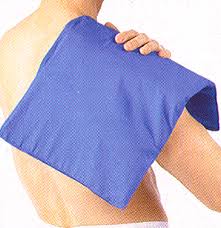Heating Pad

A heating pad is a device utilized for warming specific areas of the body to
alleviate pain. The localized application of heat prompts the blood vessels
in the targeted area to expand, enhancing blood flow to the affected tissue.
Various types of heating pads are available, including electrical, chemical,
and hot water bottles.
Electrical heating pads typically function using household current and
require safeguards against overheating. Moist heating pads, used directly on
the skin, can reach temperatures ranging from 170 to 180 degrees Fahrenheit
(76 to 82 degrees Celsius) and are designed for deep tissue therapy.
However, they can pose a risk if left unattended.
Moist heating pads are primarily utilized by physical therapists but are
also available for home use. Adding a moist cloth with a stupe cover can
further increase moisture during treatment.
Chemical heating pads, such as sodium acetate heat pads, employ a one-time
exothermic chemical reaction, such as catalyzed rusting of iron or
dissolving calcium chloride. These pads contain separate compartments for
the reagents. When the user squeezes the pad, the compartments break,
allowing the reagents to mix and generate heat.
Reusable heat pads commonly contain a supersaturated solution of sodium
acetate in water. Flexing a small, flat disc of notched ferrous metal within
the liquid triggers crystallization, releasing stored energy. To reuse the
pad, it is placed in boiling water for 10–15 minutes to dissolve the sodium
acetate trihydrate and recreate a supersaturated solution. Once cooled to
room temperature, the pad can be triggered again.
undo Medical Equipment